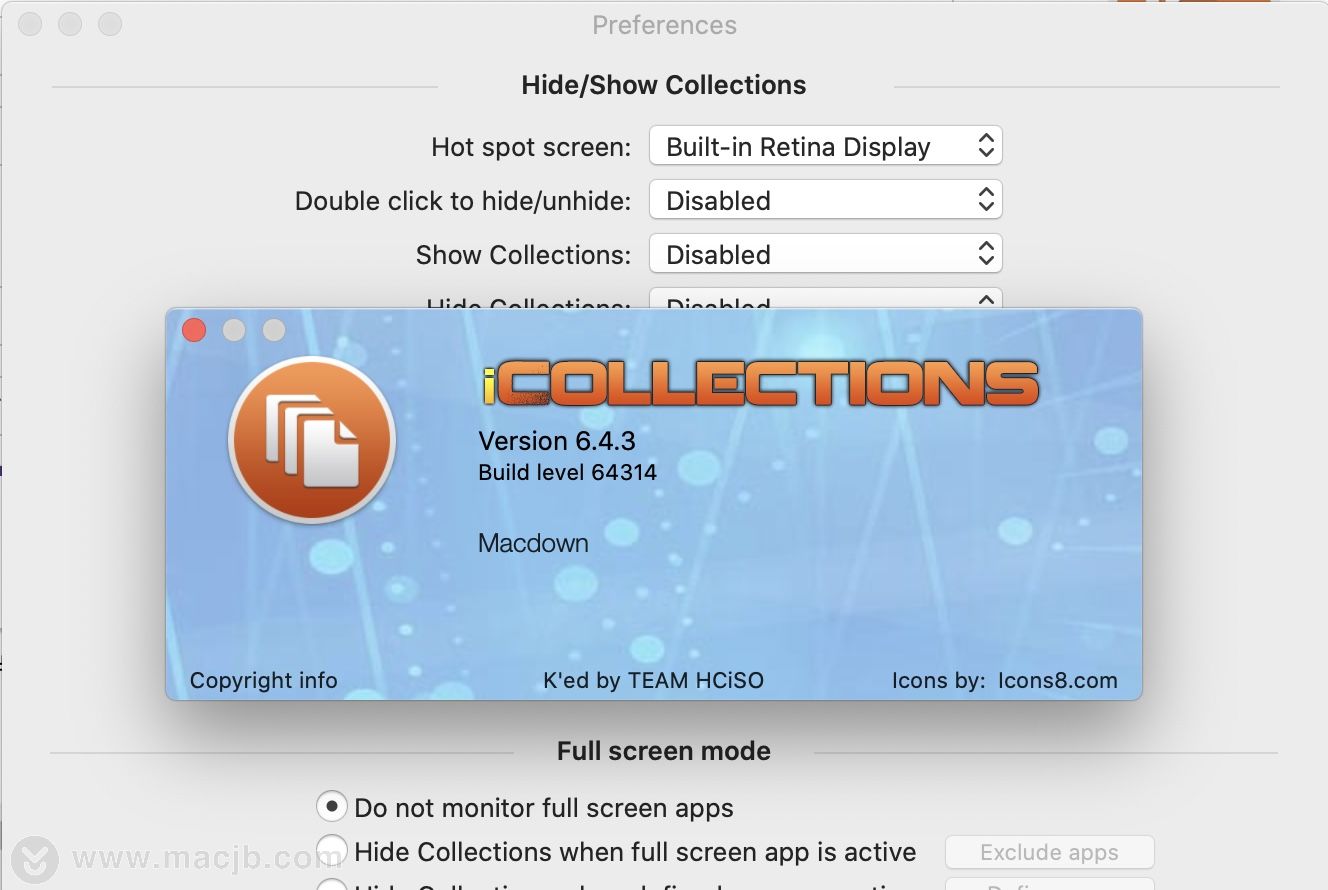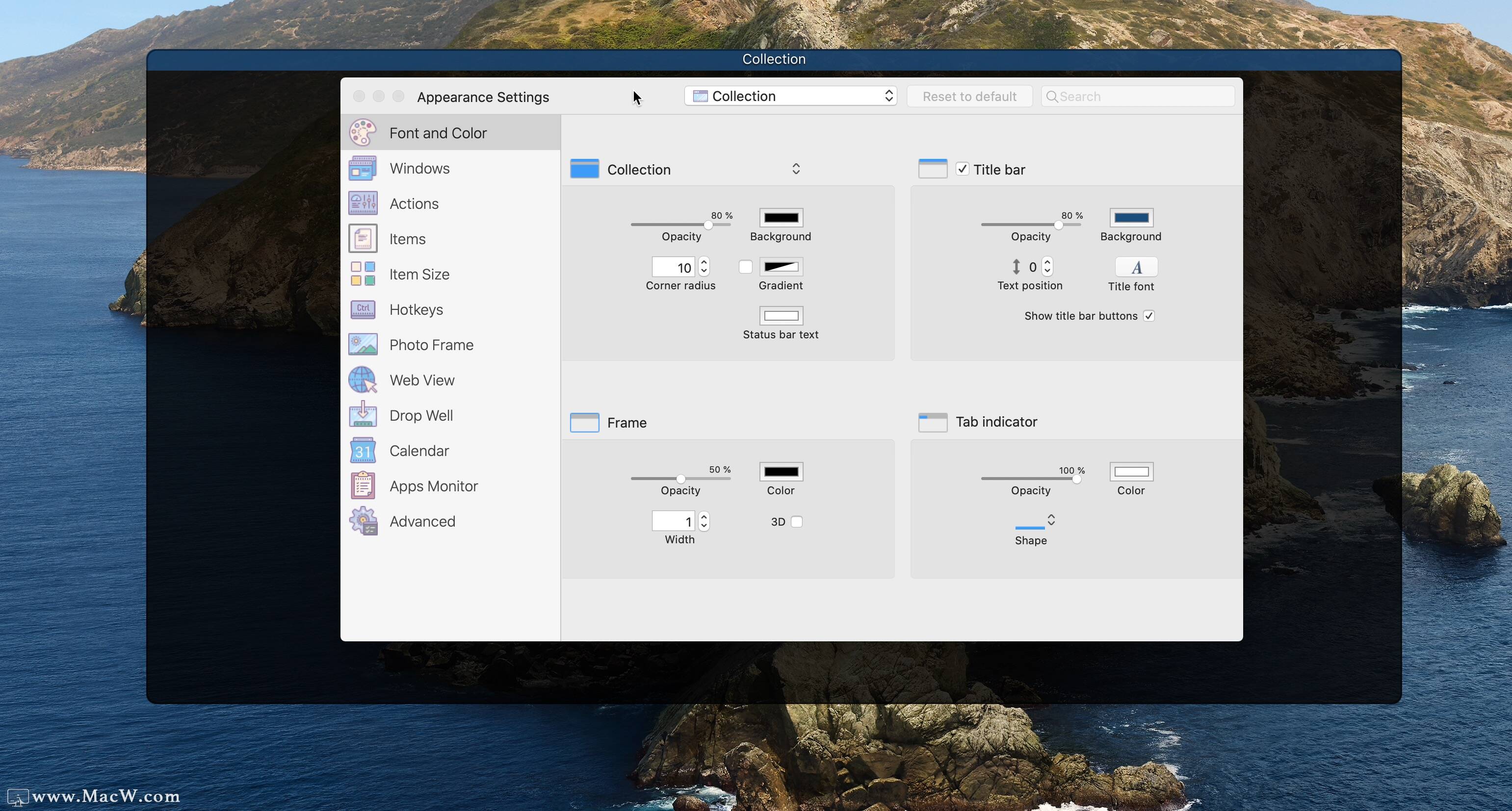
You can label, re-size, highlight or move them however you would like. You can open (double click), rename (click on a label), remove (Cmd+Backspace), view (space key), copy and move (drag and drop), locate in the Finder window (context menu), and more. Once your items are in a collection, you can perform the same actions as you could on items on the desktop. When you move your mouse over the tab, the contents will spring open. And presto, you have freed up space on the desktop. Next, you will need to choose to which border you would like to place its tab. If you wish to copy and move files, then you need to disable the “Only create aliases” option in Preferences. Add what you will to the collection and by default, an alias of it is created in the collection. It is from here that one can create a collection folder. The main interface to interact with iCollections resides in the menu bar. You can also assign a keystroke shortcut to the text clipping item and use the shortcut to paste its content over and over again. The URL and text clip can be taken from an application in macOS or can be created manually. URL links, as well as fragments of text (text clippings), can be stored. Collections are not limited to only files, folders, and applications. This should increase task and time management effectiveness by offering a streamlined desktop where everything is organized to your specifications. This helps you keep related items together so your files are organized and easy to find.

ICollections lets you create areas on your desktop so you can store, sort, and arrange your icons. Read on to find out if this application might be right for you. Once I started using it, I found that it had many other very interesting additional functions that set it apart from the similar desktop organizers.

iCollections is another of the useful applications that organizes icons and keeps the desktop neat.
Icollections how to#
NET Collections area and helps make decisions on when and how to implement each of them.Most of us are fighting the never-ending battle of keeping our desktops uncluttered. Hopefully, this article gave a very brief introduction to the three most popular interfaces in the. When it comes to performance, we cannot compare the interfaces against each other, but rather specific operations, so best to research those particular methods as you implement them in your application. Therefore, if possible we should always try and use IEnumerable. NET (or any object-orientated language), advice tells us to use the highest interface possible to enable the greatest flexibility. Else use IEnumerable for all other scenarios.Otherwise, do we need to add or remove items in the collection? Use ICollection.Do we need to execute LINQ operations on remote data sources? Use IQueryable.We should have gathered by now, that the choice is pretty simple: Now that we’ve discussed each collection, let’s summarise how we can choose each one. Often when we have items from multiple sources, we need to add items to existing sequences, so having this functionality is a very useful feature. IEnumerableLoopExample(new List Īs expected, the output is 2, 3, 5, 100. Private static void IEnumerableLoopExample(IEnumerable numbers) Let’s look at a simple example: using System

Because it is also such a top-level interface, this allows the best flexibility. Any class that implements IEnumerable can be enumerated with the foreach statement, so it makes a good choice for cases when you want the consumer to loop over the items and perform some action. It is the base interface for all collections in the namespace, such as the popular List class, and it’s likely the one you’ll use most in. IEnumerable is an interface in the namespace. In this article, we are going to focus on the generic implementations of each of the interfaces (e.g IEnumerable, IQueryable, ICollection), as these are the recommended interfaces to achieve type safety since generics were implemented back in. These features are the ones we need to pay attention to, in order to make decisions on their application. NET shares similar functionality but usually have one or two key defining features. Each of the different collections interfaces in. NET, we have a variety of different ways we can do this, but in this article, we’ll discuss the most popular ones. NET Collections are a set of similar types that are grouped together.
Icollections code#
To download the source code for this article, you can visit our GitHub repository.


 0 kommentar(er)
0 kommentar(er)
